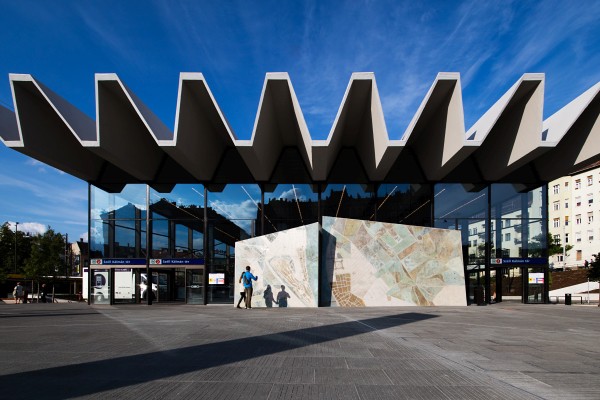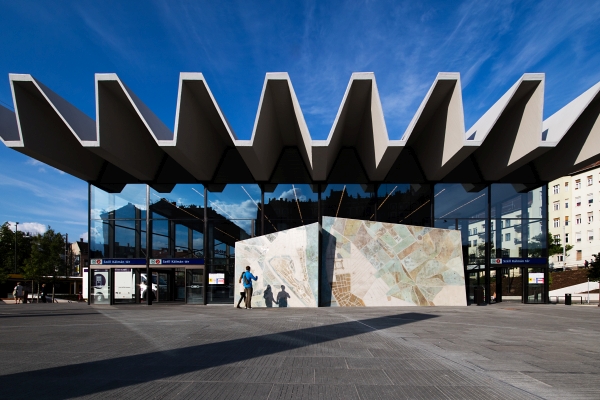Slow-Down
Reconstruction of Széll Kálmán Square, Budapest
Architects: Tamás Fialovszky, Richárd Hőnich
Landscape architect: Barnabás Szakács
Text: Eszter Götz
Photos: Tamás Bujnovszky

The reconstruction project of Széll Kálmán Square, which is the largest junction of the transport system of Buda, has been exposed to open and heated disputes as it divided opinions of both professionals and the wider public. Uncertainty is rooted in the ambiguous identity of the site. Actually, it is not a square but a junction with extraordinarily heavy traffic, and as a result it occupies an unworthy geographical position which is on the verge of being hopeless. Several ten thousands of people commuting and changing vehicles of public transport as well as city-dwellers who are obliged to wait here are actually moving about in a gigantic ditch: the sides of a triangle that can be drawn around it run parallel with the busiest tram routes of the city, with one of the underground lines beneath. The designers who won the tender of the reconstruction in 2011 interpreted the task in its entire complexity, including the limited potentials. They have surveyed and calculated that there is no way considering technical and financial possibilities to channel at least a certain part of the ongoing traffic underground. They also realized that this site shall only turn into a genuine square if it is able to contain all the interactions that have been going on here for over decades, but also has the potentials of rearranging them to a new order. The scheme has an architectural core which is meant to free and expose the mass of the underground station building. All disturbing components have been removed from around it so as to allow the dynamism of the undulating roof to evolve in its entirety. Two new structures have been added to the existing ones in the square. One of them nestles against the ramparts of the hillside, behind its glass partition there is now a lift to facilitate easy access and a huge interior which is still empty but which is meant to house a bookshop and diners later on, according to plans. The other, significantly larger block is the so-called service house which is soon to be filled with as eateries, cafés, a ticket-office and restaurant decks are planned to be built here in front of it.
General design: Főmterv Zrt.
Architecture and landscape: Tamás Fialovszky, Richárd Hőnich, Benedek Sólyom, Gergely Kenéz, Gergő Jedlicska – Építész Stúdió Kft.; Barnabás Szakács, Sándor Liziczai – Lépték-terv Kft.










